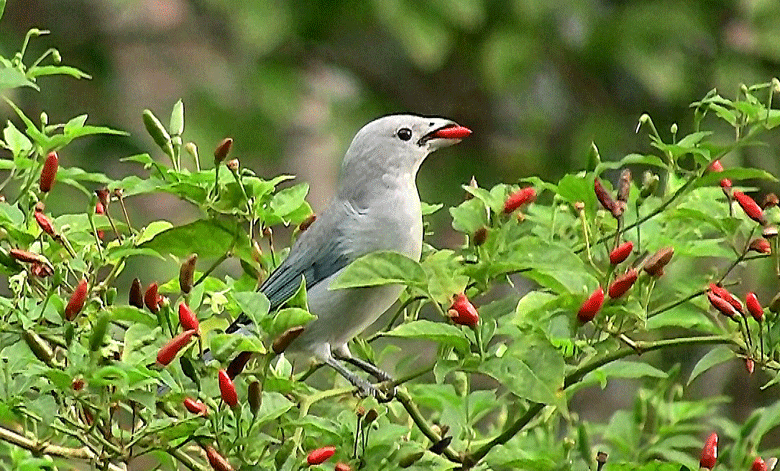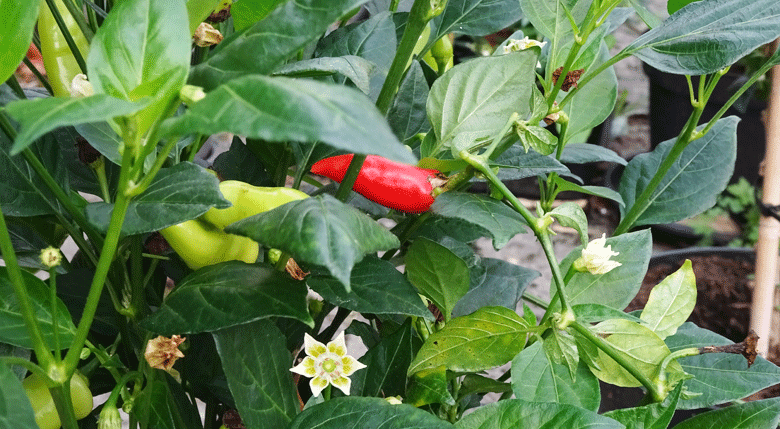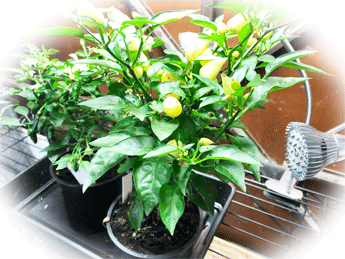An update
In a previous post I covered how I have placed Chillies under grow lights to find out if this helps ripen them more quickly. I hope that by keeping them warm and under artificial lighting ,they will be encouraged to start ripening their fruit sooner. Here’s an update and some more thoughts.
Attracting the birds

Autumn is upon us
As mentioned, the reason I needed to attempt his is because the season seems to be running out on me. There may not be enough time to ripen the Chillies before the first frost. I have had seasons where in the past, even though I started the season earlier that I still found myself with lots of unripe Chillies. I am trying to avoid this happening this season by trying out other methods of speeding up ripening
Having said that, maybe there is still enough time for the Chillies to ripen naturally. It is known that Chillies only start concentrating on ripening their fruit in Autumn. Autumn is when birds start preparing to migrate. They stock up on their energy levels to make the long flights that this migration often entails. One way they do this is to eat Chillies. The Chilli know this and turn their pods to a colour that attracts the birds. Often this colour is bright red.
Finding sunshine

Grow lights
Bearing in mind, we are only at the beginning of August right now, it is possible for ripening to start soon. However, until I see signs of ripening, I am still a bit apprehensive. So, I am going ahead with all guns blazing to see what I can do. I believe the answer may lie in grow lights.
I have placed two plants under grow lights. One is a Barak Chilli with fruit that is currently yellow. The other is a yet to be identified plant with green Chillies. In both instances, I have the variety outside. The plants outside will be used as the basis of comparison to determine if grow lights improve ripening
When it comes to grow lights, my research has revealed the best way, it seems. to ripen the Chillies. is with P.A.R red light. PAR or Photosynthetically Available Radiation is the type of light that Chillies use to grow. Apparently, while blue P.A.R, blue light is good for vegetative growth, it is red P.A.R that is needed for flowering and fruiting. This seems to tie in with what happens in nature. By all accounts, as the day becomes shorter in autumn, more red radiation is found. This is of course the time of the year when chillies start ripening naturally.
Photosynthetically Available Radiation is the type of light that Chillies use to grow. Apparently, while blue P.A.R, blue light is good for vegetative growth, it is red P.A.R that is needed for flowering and fruiting. This seems to tie in with what happens in nature. By all accounts, as the day becomes shorter in autumn, more red radiation is found. This is of course the time of the year when chillies start ripening naturally.
The Chillies I have taken indoors are under fluorescent grow lights. This unit has four 55 watt lights and produces 19200 lumens. I am not sure whether these are ideal for t ripening, so I am looking into grow lights that have a greater red-light P.A.R capacity. I am still in the process of selecting what I will buy, and hope to find something soon. In the meantime. I will be watching the effect that the fluorescent light has on ripening with interest.
On another note. I referred to Ristras in my previous post. I forgot to mention that if Chillies are “mature green” (partially ripe), they can be placed on a bowl on a sun facing window. They will ripen within a week or two. There is no need to hang them in a Ristra for that to happen. The important thing is the sunshine.
Final thoughts
The best way of ripening Chillies is definitely while they are still on the plant. If this can be achieved, the fruit will have far more flavour and character. With this mind, it is essential to allow enough time in a season for your plants to grow to full size and produce fruit. This requires starting a Chilli growing season at the right time. In countries like the UK with short seasons, this means starting the season indoors well before spring. This will give the Chillies enough time to reach maturity and deliver fruit without any race against time. Certainly makes sense to me!
Note
It is common when you buy seeds, the packet doesn’t always contain what it says it does. This Chilli is a case in point. I am still trying to identify what it is, and will report back when I do.
Image credit
.Alex Popovkin, Bahia, Brazil / CC BY -NC -SA 2.0 / via Flickr
